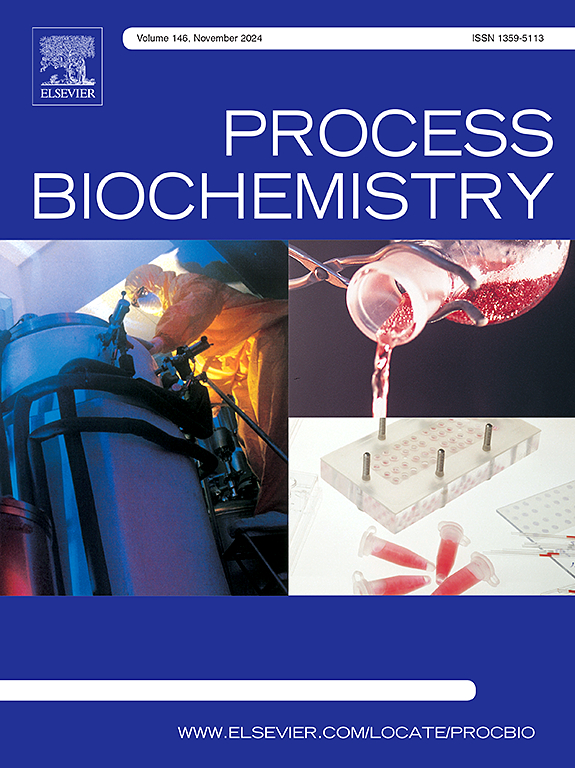Improving eicosapentaenoic acid yield by constructing an enzyme-constrained model of Schizochytrium
IF 3.7
3区 生物学
Q2 BIOCHEMISTRY & MOLECULAR BIOLOGY
引用次数: 0
Abstract
Eicosapentaenoic acid (EPA), an essential omega-3 polyunsaturated fatty acid (PUFA), cannot be produced by the human body. It finds applications in various fields, including health foods, pharmaceuticals, and animal feed. Schizochytrium sp., an oleaginous microorganism rich in PUFAs, holds promise for EPA production. However, its complex metabolic network limits its full potential. To address this challenge, we constructed a detailed enzyme-constrained model eciCY1170_DHA of Schizochytrium's metabolism. This model incorporated 1083 genes, 5236 reactions, and 2989 metabolites. We then used this model to simulate fermentation conditions and validated our predictions through experiments. Our research results indicate that the optimal nitrogen source absorption rate is 0.7692 mmol/gDW/h, and the optimal oxygen absorption rate is 3.41 mmol/gDW/h. When both absorption rates are higher or lower than the optimal values, they will hinder EPA production. Conclusions drawn from simulations and experiments show that by adjusting the nitrogen source concentration, Ventilation volume, and agitation speed, the maximum yield of EPA reached 1.09 g/L in a 5 L fermenter. By analyzing protein requirements, we identified 20 potential targets predicted to enhance EPA production. This study provides new ideas for the optimization of medium composition and strain modification for the industrial production of EPA using Schizochytrium.
求助全文
约1分钟内获得全文
求助全文
来源期刊

Process Biochemistry
生物-工程:化工
CiteScore
8.30
自引率
4.50%
发文量
374
审稿时长
53 days
期刊介绍:
Process Biochemistry is an application-orientated research journal devoted to reporting advances with originality and novelty, in the science and technology of the processes involving bioactive molecules and living organisms. These processes concern the production of useful metabolites or materials, or the removal of toxic compounds using tools and methods of current biology and engineering. Its main areas of interest include novel bioprocesses and enabling technologies (such as nanobiotechnology, tissue engineering, directed evolution, metabolic engineering, systems biology, and synthetic biology) applicable in food (nutraceutical), healthcare (medical, pharmaceutical, cosmetic), energy (biofuels), environmental, and biorefinery industries and their underlying biological and engineering principles.
 求助内容:
求助内容: 应助结果提醒方式:
应助结果提醒方式:


